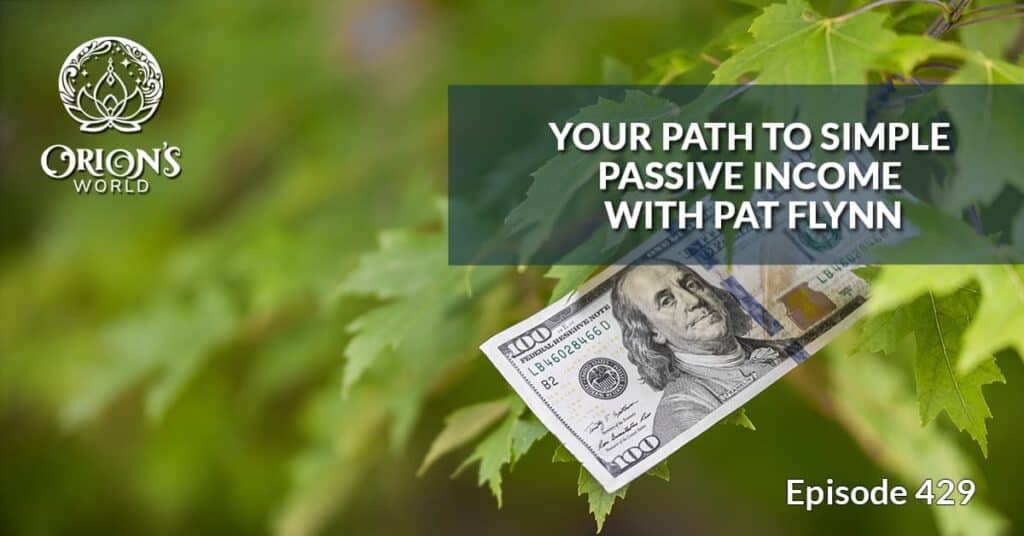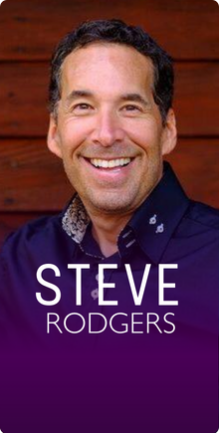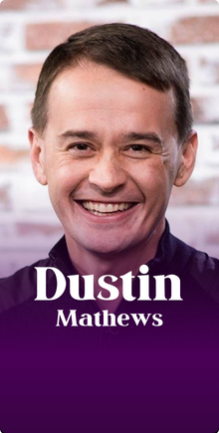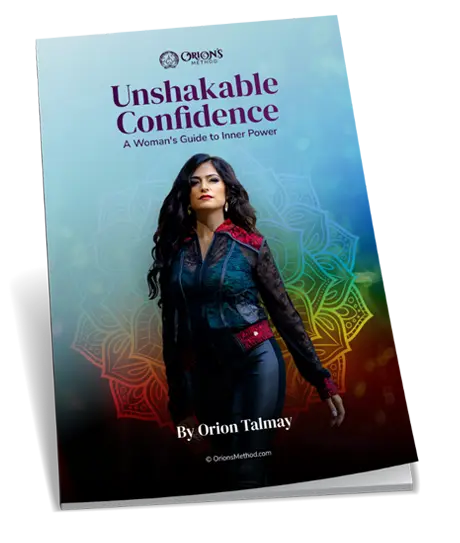In this Episode
- [02:34]Pat Flynn reflects on his childhood dreams—from aspiring baseball player to architect—and how a layoff in 2008 led him to embrace entrepreneurship.
- [07:28]Orion and Pat explore the genuine kindness and relatability Pat brings to both personal and professional interactions.
- [12:13]Pat examines the trade-offs of being honest and transparent online, including the risk of public backlash.
- [15:46]Pat outlines his book creation process, from identifying audience pain points to writing and publishing.
- [21:00]Pat considers the role of AI in content creation and underscores the irreplaceable power of human connection in storytelling.
- [39:30]Pat reveals his approach to managing multiple businesses, including his Pokémon YouTube channel and Smart Passive Income blog.
- [41:59]Pat emphasizes the value of cultivating a supportive and collaborative atmosphere for remote teams.
- [42:54]Orion invites Pat to share guidance for aspiring YouTubers launching channels in today’s landscape.
- [48:29]Pat details his time management strategies, highlighting the importance of carving out space to think, rest, and recharge.
About Today’s Show
Hey, Pat. Welcome to the show. Thank you so much for being here.
Hey, my pleasure, Orion. Thank you for having me.
Yeah, so you’ve been extraordinary in the marketing world, you’ve done so much. You’ve run so many companies. When you were a child, did you ever think this is who you would become?
No, definitely not. I wanted to be a baseball player, a sports person. I was pretty athletic. When I was really little, I was pretty much bigger than most of my friends. And then all of a sudden, in third grade, I stopped growing, and everybody else kept growing. My sports capabilities, at least relative to my competitors and teammates, started to decline, so I was just trying to excel academically. That’s really what my goal was when I was little, and let opportunities happen.
Then I wanted to become an architect. As soon as I started thinking about college and what I wanted to do with my career, when I knew that sports wasn’t going to be a thing, I decided that I wanted to go into the world of architecture. I always loved to draw and build things, and everything from LEGO to Lincoln Logs was a part of my childhood growing up, so it kind of made sense. It was a career that I fell in love with.
A lot of marketing that was taught, especially back then, was more about treating your customers like a credit card number rather than an actual human being, and I never felt good on the receiving end of that.
I got into it. I went to UC Berkeley, and even graduated magna cum laude with a bachelor’s degree in architecture. I thought that’s what I was going to do for the rest of my life, until I wasn’t able to anymore because of the recession in 2008. That’s kind of when everything fell apart, but also gave me an opportunity to build things back up in a different way.
How did you find your passion for marketing?
It came as a result of trying to just survive. I’ve always known about and have always kind of understood marketing a little bit. I was trying to sell stuff to people, and that’s kind of what I knew about it. But when it came to the point after getting laid off, that I eventually had to do that on my own, I started to really question how to do it in a way that made me feel good, because a lot of marketing that was taught, especially back then, was more about just treating your customers like a credit card number versus an actual human being, and I never felt good on the other end of that.
So I decided when I became an entrepreneur, and long story short, I actually started a website to help architects pass an architectural exam. That was my first foray into online business, and it blew up. It did really well, and it did so not because I was good at marketing, but because I just knew exactly what my audience was going through, because I had just passed that exam myself.
In a way, that’s the best marketing when you can understand who you’re serving, right? I think it was Jay Abraham who said, “If you can define the problem better than your target customer, they will automatically assume you have the solution.” Well, I knew exactly who my customer was because I was my own customer.
I think this really came to light in 2009. I launched my business in October 2008, and it did very well. I sold a study guide, which was just a PDF file, for $20, and it turned into a six-figure business from there. However, in May 2009, the U.S. Green Building Council (USGBC), the organization that develops the questions for this exam I was preparing people for, released its own guide. I thought I was done for.
“If you can define the problem better than your target customer, they will automatically assume you have the solution.” – Jay Abraham.
I started to question why people would purchase something from me when they can literally buy the guide from the people writing the questions? And lo and behold, that was my most profitable month. When I started asking questions to my customers, like, “Why did you buy from me? What was it about my stuff? Why didn’t you buy from the other people?” And they said, “Because I related to you. I felt like you knew exactly where I was.”
These were the kinds of answers that I was getting, and that really changed my life. It helped me realize that the more I lean into who I’m serving and actually step forward to serve them first, I can always get something back in return. So, my mantra has always been: your earnings are a byproduct of how well you serve your audience. I just kind of lean into that. I try to be an example of that, and I teach that to my students now as well.
But I think it’s something more than that, because even with me, I saw you always from far away, on stages and some on videos. And I was quite nervous taking on this interview that Stephan was supposed to take on, but he’s sick. However, from the first two seconds I spoke with you, I just felt that there’s some kind of kindness or generosity emanating from you. You make you feel really, really genuine and relatable, and you feel like you care. You know how you judge people in three seconds. I can judge people in two.
There’s a lot of truth to that in the first impression and the thousand things you say before you even say a word, kind of thing, and I appreciate that a lot. I’ve heard that before. I’ve tried to distill why that’s the case, and I feel like some of it’s intentional, where I know that if I come into a room loud and aggressive, then that’s how I’m going to be perceived a certain way.
But, I mean, what was the first thing that I asked you before we got started? I said, “Tell me about who your audience is,” because I want to make sure I serve them best, right? I’m literally talking about what I’m saying here. I’m walking the walk in real time. And it’s because, again, I come from that place of, “Well, I’m here for you.” I mean, you were so generous in asking, “Hey, we’re gonna talk about your book today. How do we set that up?” And I said, “Let’s not even worry about that. That’ll come naturally. I’m here for you.”
The more I lean into who I’m serving and step forward to serve them first, the more I can always get something back in return.
And I think that again, just showing up in that serve first kind of attitude has always been what I’ve done. And that comes out both with the words that I say and maybe just my tone and how I show up and body language, I don’t know, it might be even deeper than that.
Even with Smart Passive Income, you always shared your income with everybody. That’s being so transparent. How do you think it served you? Did it take something from you?
So, to provide a little bit more color on what we’re talking about here. In October of 2008, which was the first month that I sold my study guide, I decided that, because a lot of people started to also ask me, “How did you do that? Can you share with me how you became an entrepreneur relatively quickly? I want to do the same thing.” Everybody was struggling at the time, and they wanted to find their way out and a way to survive.
I was more than happy to share everything I was learning. And then I started to go, “Okay, well, if people really want to learn from me, I think the best way to do that is if I just share everything and became fully transparent,” and that included sharing how much revenue I was making, how many customers I had, and every month doing that for years, showing the ups—it wasn’t always up. Sometimes it was down, but being very open and transparent, not just with the numbers, but also why the numbers happened. “Here’s what I fell short on. Here are the mistakes I made, too.”
That was very much inspired by—so I was a huge personal finance blog nerd. Remember when you would read blogs with an RSS feed reader, and you’d wake up in the morning and there’d be like 40 new articles from your favorite bloggers? So, all the bloggers I followed, from Get Rich Slowly to Simple Dollar, there was one in particular called My Money Blog, and this person was very open about the stock trades they made. They shared exactly how much they were spending and how much they were making and also how much they were losing, and that made me trust that person much more versus other people who were talking about retirement plans and funds and mutual funds and all this kind of stuff, but weren’t really showing what they were doing. They were just telling.
I’ve always taken a “serve first” kind of attitude, simply showing up with a willingness to help.
I really loved and admired this person for doing that. So I think I brought a lot of that over to the entrepreneurial space, because I was like, “Okay, I wasn’t selling anything at this time.” I also knew how important it was to build trust, and so I just said, “Okay, I’m just going to fully show everything.”
And eventually, that became a part of the flavor of Smart Passive Income: “Well, he’s sharing everything, the good, the bad and the ugly.” But it’s fascinating, because over time, you were able to see the sort of upward trends and the growth and every once in a while, there’d be a month where I’d have an astronomical increase in revenue, and it would be so fun to talk about how that happened.
“Hey, I released an audiobook to go with my architectural written book, and here is where I struggled with that.” I talked about how I tried to record that myself at first. Then my mastermind group told me that that was silly, that you should hire a voiceover person, and how scared I was to invest $2,000 to do that, but how I was able to make that up in the first day, and all these lessons that I was learning in real time I was able to share.
And again, I think that did so much for quickly building that trust. It became, yes, a quick little carrot that was easy to share. Like, “Oh, dude, this guy, Pat Flynn, he’s sharing his income. Cool!” That was very easy to share and very interesting and different, but also just opened up the fact that I was just doing what I was doing. I wasn’t trying to convince anybody of anything. It’s just “Here I am, and here’s what’s happening.”
Now, over time, when it grew to six figures per month, which it did, at one point, it actually started to work in the opposite direction. It started to disassociate myself from the level at which my audience was. It started to feel that’s way beyond where I’m at now. “He’s doing all this advanced stuff. He’s building a team—that’s like, I can’t afford a team yet. I’m a solopreneur. I am not ready for his stuff,” or “He is beyond my level now, so therefore I’m going to move on to somebody else.”

I started to, in a way, outgrow my audience by sharing those numbers over time. So, eventually, I had to make the decision to just stop doing that and instead focus on more campaign-based reporting. One of the bigger ones that I did, and again, this was a way for me to reconnect with my audience, not by disassociating myself through the numbers, but rather saying, “Hey, here’s a particular campaign.”
For example, I wrote a book called Will It Fly? in 2015 and in 2017, I revealed all the numbers behind that. “Here’s how much it costs to put together. Here’s how much I made from Amazon. Here’s how I also turned that into a lead generation magnet.” I actually included a companion course inside that book to be able to capture those emails that Amazon doesn’t give you.
And that was very much not just like a numbers lesson for people, but also very, very strategic and tactical for people who are authors as well to copy and use as inspiration for their own stuff. I’ve still found a way to kind of provide that information, be honest, but in a different way. I mean, what got you here won’t get you there. You have to evolve with your audience as well, and I feel like I’ve been able to do that in a good way.
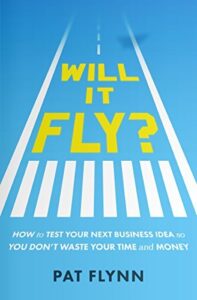
Is there a cost to being so honest and transparent online?
There’s always a cost for everything. The cost of being honest far outweighs the cost of whatever anybody might do to manipulate things. I remember in 2012, I had partnered with a person who eventually came out and shared that he was lying about all of his numbers. And this was a person with whom I became associated because I was working with him, and we were about to launch a product together. Then, all of a sudden, he developed a guilty conscience.
Looking back, I’m grateful he did that, because it could have gone deeper and been worse. However, I was pulled in with him at the time, even though I was honest the whole time, while he wasn’t, simply because I was associated with this person. It was very much a slap in the face to everybody who had been following me.
As you continue to build trust, I think it’s not necessarily a downside, but the more that you build trust, the more conscious you have to be about all the moves that you make. And that’s not to say that you shouldn’t be honest, so that you can avoid that, but rather, just with the growth and the audience that you connect with and the trust that they build with you, you have to be sure that you still remain true over time.
As the audience grows, as money comes in, I’ve seen it, not just with this person that I was working with, but other people who have become successful, who have completely changed who they are, or their values have changed. It’s very scary. In many cases, they don’t know they’re doing that. It’s just where the money and the fame have taken them.
I have purposefully put things in place to stop myself from doing that, almost like, on the road, there’s these—they call them rumble strips when you’re on the road, and if you’re, like, falling asleep, you kind of go over to the side, and there’s these bumps on the road that kind of wake you back up. I put those in my own life in different kinds of ways: my mastermind group, my wife and even my audience. I tell my audience, “If you see me veering off course, slap me in the face so I can get back on. Please be honest with me as I go,” because I don’t want to fall into those traps, because I’ve seen it before.
When you enjoy the work you're creating, your audience is more likely to enjoy consuming it. Share on XYeah, with great power comes great responsibility, and it’s definitely—they say that money is a magnifying glass for the person that you are, and that’s true. And it’s also when people gain a lot of money and fame that they can become confused, not necessarily highlighting their bad qualities. It can just be overwhelming. I guess it’s good that you have that support team to keep you defaulting into generosity, like on your shirt.
That’s true. I mean, it makes sense, though, when you are working so hard, oftentimes you’re not getting the results you want—all of a sudden, boom. You start to see some revenue come in. But more than that, you start to get other companies of these other brands, other people, partnerships, potentially, who reach out to you, who tell you you’re great, who want to give you attention, who want to share revenue with you, who want to get your face in front of their brand.
It can be very easy to just get wrapped up in that and fall into those traps. Not to say that those are bad, they can be good. But if you don’t do your due diligence, you could connect with a company that might be in this for the wrong reasons. You have to make sure you do your research and do your due diligence. It can be very easy to fall into those traps because we crave that success. I mean, we’re working hard online so that we can generate revenue, and once it comes in, it’s seemingly like more and more of it, the opportunities come by, but you’ve got to be careful.
How do you come up with the ideas for your books and your viral videos?
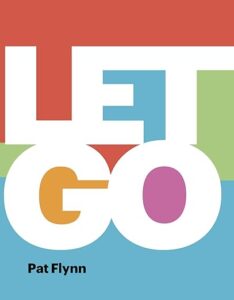
The books have always come as a result of just what my audience is asking me the most about—it’s always pressure-tested. My first book, titled Let Go, was written in 2013 and is a memoir of my experience getting laid off and the mental transition into entrepreneurship. And it’s called “Let Go” because I was let go from my job. But I also had to let go of who I thought I was supposed to be, right?
Let go and let God.
I mean, I had to. Essentially, I was straddling two ladders. Even though I was building businesses, I was still going in for architecture interviews, because my body and mind had spent all this time going to school for architecture. That’s what I’m supposed to be. But eventually, I had to let go of that in order to, in fact, grow as an entrepreneur. A lot of times, we’re straddling a lot of things. Imagine trying to climb two ladders at once. You can’t do that, or it’s very difficult at least. That’s “Let Go.” It was just a result of people being more curious about my mental state in that transition.
My next book was Will It Fly?: How to Test Your Next Business Idea So You Don’t Waste Your Time and Money. I ran a survey of my audience in 2013, and I asked them, “What’s your number one challenge? What are your biggest brick walls that you’re facing right now?” This was a question inspired by Ryan Levesque, who wrote the book Ask, and a lot of questions came back, “How do I know I’m going in the right direction? I don’t want to waste my time. I don’t want to waste my money. I need to make sure this idea works first. I’m so worried and I’m fearful of taking the wrong steps.”
So, I wrote this book in response to the number one struggle that people had, which is just getting started and taking those first steps. So, Will It Fly? The tagline says it all: how to test your next business idea so you don’t waste your time and money. It’s about validating your ideas. It’s about getting to the point where you can actually pre-sell your idea before creating it, so that you know it’s going to work and not doubt yourself. Instead, use real evidence and proof to show that what you’re doing is the right next step.
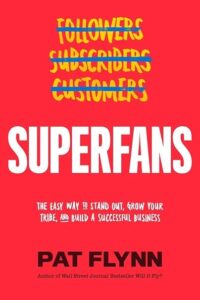
And also the benefit of getting to a red light, not a green light. But a red light, where something doesn’t work, that’s of benefit to you too, because you can learn and pivot around that. That’s important too. This idea is about taking action and letting mistakes guide your way, rather than waiting for the perfect time or never taking any action at all.
Superfans came about as a result of a presentation that I gave in 2015 at New Media Expo. This was a presentation I did, which is about converting your casual audience —people who find you for the first time — into raving fans. Because I had a lot of raving fans, and people were like, “How do you have people who will literally buy anything you talk about, no matter what it is? How do you have people who will just fly over to see you if you just say you have an event? Can you teach me how to do that?”
Well, that’s part of it, but it’s a process. You have to first provide some value to them. Show them how they can be a part of a community, and you need to speak the same language. And this whole process has a framework that I use to build superfans. It was this presentation that I continued to get hired to do. People in the audience wanted me to speak at their events. And so I spoke about this 20 to 30 times. It became a very fine-tuned presentation that I could give right now if I needed to.
I had a friend of mine who said, “Pat, you’ve done so well with this talk. It’s just so obvious to me, it needs to be a book.” This is Jay Baer. I was like, “Yeah, book writing is hard. My struggles with writing Will It Fly? I don’t really want to go through that again.” He’s like, “You have the outline already. It’s your presentation. Just extrapolate that.” I was like, “Wow, you’re actually right.”
So, I wrote this during the month of November 2018. This month is also known as NaNoWriMo, which is National Novel Writing Month. This is a month that a lot of writers will just use as a container to crank out a book. I decided to do that myself in November of 2018. I finished on my birthday, December 6, so I didn’t complete it in November, but I had the book done. Of course, it was sped up because I had already presented on this topic so often, and it was published in 2019 at one of my events.
Increasingly, people are recognizing the importance of not only acquiring customers but also cultivating loyal fans. This idea of having real human connections now leads to lifelong fans.
It has done very well. It continues to actually excel out there in the world of entrepreneurship now, because more and more people are seeing the importance of not just getting customers, but building fans, this idea of having real human connections now that lead to lifelong fans. This is how you future-proof your brand amongst the world of AI: build a community and build superfans. This book has been taking off without any additional help from my end. It’s just percolating through the grapevine, and it’s amazing to see that it was a little bit ahead of its time as well. I was a little prophetic in how important community, people, and superfans are. So, I’m proud of that book.
Then this latest book, which is called Lean Learning. This is my first traditionally published book. All those other books were self-published, and even though that’s the case, one of them became a Wall Street Journal bestseller: Will It Fly?, which is quite remarkable. But this book is one ring outside of the world of entrepreneurship. This is now into personal development and self-help, because it’s about learning. It does answer another question that people have given me, which is, “How do I know who to learn from? There’s so much information out there. I’m overwhelmed. I’m confused.”
How crazy. Especially with AI. Now you mentioned AI, you’re like, “Oh, now I have to learn AI, and I have to be really masterful at all the prompts, and know exactly how to work with this fast-paced world.” How do you deal with all that?
The Lean Learning is interesting because, previously, information was valuable, but there wasn’t a lot of it. If you had information, you were smarter, and you were more valuable. If you owned an Encyclopedia Britannica in your home, you were, by default, smarter because you had access to stuff that other people didn’t.
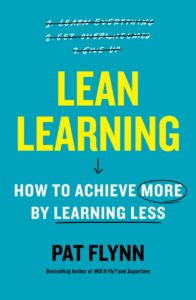
But today, we all have access to the same information, and not only that, we’re now at a buffet line of information, and we’re filling our plates so high because we as humans aren’t evolved to consume this much information that’s coming our way. Literally, we’re being force-fed information, too. Algorithms are putting stuff in our face that we didn’t even know we needed.
As a result of this, we’re now bloated with information. We’re lethargic, we’re confused, and we’re overwhelmed. When we try to actually get things done, achieve something, or learn something, it’s so hard – it’s actually harder than ever, even though all the information we need is readily available.
There are many principles in this book that I discuss, but these focus on speed running and skill acquisition. I wrote this book not only for my audience, but also for my kids. My son is 15, and my daughter is 12; they are about to enter their young adulthood in a world that is increasingly hard to navigate, given the vast access to information.
Imagine what it will be like for young kids now. As adults with mature cognitive abilities, we often get lost in social media, plagued by FOMO and other concerns. So, how can young kids handle it? It’s hard.
Exactly. This book, hopefully, is at least a starting point for the world in the world of education, learning, and for people wanting to succeed in general. One of the principles that I talk about, and one of the bigger concepts, is this idea of gathering “just-in-time” information versus “just-in-case” information.
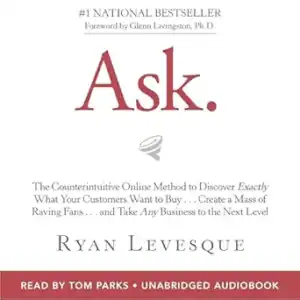
A lot of us consume just-in-case. However, there is so much out there. In fact, a lot of that is inspirational, but I call them “junk sparks.” They’re inspirational, but they’re pulling us away from the commitments that we’ve already made. I think we’ve all felt this. We want to go here. The bright light syndrome, or shiny object syndrome.
As I learned from my mentor, only allow yourself to consume and learn about things that are relevant to the next thing that’s on your plate. Because we’re in this world now where there is plentiful information, we have to trust the idea that if we just learn about the next step—I mean, we want to still know where we want to go, right?
We still need a north star and a why. However, in terms of the learning and consumption that we do, it’s essential to have it related to the next step in that process. Knowing that the next step will provide resources, it’s crucial to make those resources available when you need them. But for now, focus on this. This is what will help us move forward.
Case in point, my book, the very first book that I wrote, which was the study guide for architecture. I didn’t know how to format a book or sell it. I had never done that before. I didn’t feel like I needed all this. I was like, “Okay, maybe I should go to business school to do this.” I fell into that trap that we all do, which is, “I need to learn all the things before I take that first action.”
But today, because all that information exists, we don’t need to do that. I just needed to, number one, open up Microsoft Word and write the thing and learn how to do that. That’s all I needed to do. And guess what? After I finished that, and it was just like one giant essay-looking thing, I was like, “Okay, now I need to learn how to format this. How do I do that? Let me find the experts in that field. Let me watch the videos of the experts in that field, and then I’ll do that. Okay, cool. I’ve now formatted it. How do I sell this? Where do I go? Okay, let me find the people who’ve done that right.”
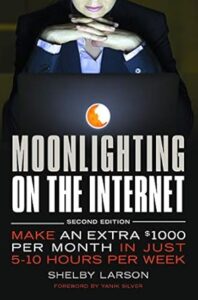
Even to the point where I was in the process of building a sales page, I was thinking, “Okay, what is the easiest way to do this?” Well, there was a book called Moonlighting on the Internet, which has hundreds of pages of many different ways that you can make money online, but in the back of the book, there was a Mad Libs style sales page generator, and it’s a physical book, so I had to copy it—it wasn’t online yet, but essentially, I could just take my product, insert it Mad Libs style, into this kind of plug and play sales page.
And that’s what made my sales page, and it ended up making hundreds of thousands of dollars because I found it when I needed it, versus, again, getting overwhelmed and confused by the entire process. What’s cool about this is that with those people that you connect with, I call them champions, your mentors, peers, or colleagues. It was a friend of mine who said, “Yeah, check out this book. At the end of this book, I remember the sales page thing. Cool.” I just went right there. I didn’t need to explore very much, because I had people I trusted who pointed me in the right direction – people who had gone down these paths before and told me what to do.
It’s a counterintuitive way of learning. I mean, the tagline of this book is “How to Achieve More by Learning Less.” The big idea here is to take action, and you will learn more by doing. You will be able to have that guide you, because there are resources available for you when you need them.
There are also other principles, such as the fact that entrepreneurs and marketers tend to overcomplicate things. We think that things have to be more difficult than they actually are. There’s a question I was asked by Tim Ferriss, a friend of mine. He is a big inspiration behind this book, but also was a big inspiration for me when I first started with his book, The 4-Hour Workweek. And it’s this question I call the “keystone” question. IT-WE-WWILL is the acronym: “If this were easy, what would it look like?” And I use that question to filter everything that I do now.

Wow, that’s very deep. That’s even spiritual; that goes everywhere in your life, such as parenting.
A hundred percent. “If this were easy, what would it look like?” Let’s go do that, versus all the complicated stuff, and just the way our brains are wired to try to feel like we have to fill in all those gaps with everything, like, “If this were easy, what would it look like?” So let’s go do that.
An example of this recently is that I invented something with my videographer. It’s called the SwitchPod. I don’t know if you know about this, but we have a physical product. We’ve never invented a physical product before, but this is a tripod. You can put your camera on top, and then when you just open it, it can turn into a grip. The arms kind of fold into each other.
Can you put an iPhone on it?
Take action, and you will learn more by doing.
You can put an iPhone or a DSLR. You can put a hundred pounds of stuff on it. It’s made out of metal. But of course, we’d never built anything like that before. We didn’t know how to manufacture anything. We didn’t know how to sell a physical product. We didn’t have an audience for this. But, “if this were easy, what would it look like?”
Well, we would have a prototype. Okay. Well, if it were easy to make a prototype, what would it look like? Well, we would just cut it out of cardboard. That’s easy. I can do that right now. That’s exactly what we did. We just cut it out of cardboard, and then literally went to events that had YouTubers and said, “Hey, if you had a tripod that kind of did this, like, hold it, how would you feel? Would that be easy for you? What do you think about this?”
We just collected feedback. “Oh, it needs to be taller. It has to do this. It has to hold a lot of heavy weight because the other ones are flimsy.” “Okay, cool. Thank you for giving us this information.” “Okay, from here, how do we make a working one?” If this were easy, what would it look like? Let’s ask around. Let’s ask some people who’ve done this before. “Oh, yeah, 3D printing, of course.” I didn’t even think of that, cool.
We 3D printed a version and then actually brought it back to these events, and people who started to see it now and started to want to get behind it, and they’re like, “Oh, Pat. This is cool. When it comes out, let me know, I’ll promote it to my audience.” We didn’t even have to ask, because we let them shape what it became. They also got to follow along on the journey. So, the marketing was happening as it was unfolding.
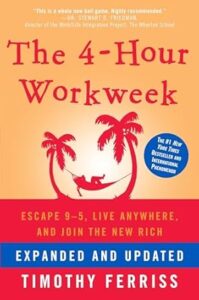
So, again, we launched on Kickstarter in February 2019; we had never launched anything on Kickstarter before. If this were easy, what would it look like? Well, if it were easy, we wouldn’t have a million different pledge levels. We would have one or two. And let’s go to somebody who’s done it before. We went to an event called Craft + Commerce, where the keynote speakers were people who had recently sold a physical product on Kickstarter.
We just made sure to ask them out to dinner or coffee, and just ask them questions. “What did you learn? What are the mistakes that you made?” We don’t have to do the research. Somebody’s already done this process. We launched the SwitchPod in February 2019.
Too cool. I want it.
Thank you. I’d be happy to send you one, actually. We had generated, in 60 days, $415,000 and were able to—it’s now a product that’s basically automated, in the most sense, by sales on Amazon and our website, and now it’s just generating revenue for us. And again, we had never done that before, but I’ve learned through the Lean Learning process that I’ve finally been able to distill a step-by-step framework to make incremental, quick advances on things.
That’s amazing. You really are leading with the audience in mind. That’s a big point. But you know you have the status and you have the audience. What if somebody doesn’t have that? How do they go about asking around or surveying people if they’re just beginning again?
I didn’t have an audience for the video stuff before, because I wasn’t known for that. I just put myself in a room where those people would care no matter who I was. There was a good example of this. Actually, it relates to the SwitchPod too.
Value doesn’t just mean audience. Some of the most valuable people in my life have zero audience.
I interviewed a friend of mine. His name is Glen Allsop on my podcast, Smart Passive Income Podcast. He’s a very smart kid, very young, and I asked him, “Hey, how would you—if you were coming out with a product like I am right now?” Basically, the same question, “How would you get the attention of people who are influencers, who could help amplify your product? How would you do that if you had zero audience?”
If I came to you and I said, “I know somebody who’s a friend with Casey Neistat, who was the top vlogger in the world, right, very popular YouTuber, and if somebody random came up to me and said, “Hey, Pat, I know somebody who knows Casey Neistat, I might be able to get him to maybe share the SwitchPod with him, or something like that, if you’d like.” At that point, I don’t care who you are; you’re my best friend because you’ve related that to something that is of utmost importance to me right now. That’s how you do it. You figure out what is most important to the person who has that audience. And it doesn’t matter who you are. You don’t even need an audience if you understand what they might need help with, and you have any value of any kind. Value doesn’t just mean audience. Some of the most valuable people in my life have zero audience.
But it’s what matters to this person right now, and what their goals are, what they’re doing. I did the same thing. I built a relationship with somebody at Apple. He’s no longer there, but somebody who worked at Apple Podcasts, because I knew he had a son who was a Star Wars fan, I sent a really cool leather-bound Star Wars notebook. He was like, “What do you need, Pat? I got you,” and I was able to get my—this was back before there were even, like, 100,000 podcasts. So it was, like, really early days. I was pretty early on in the podcasting world, back in 2010, but I was able to build a relationship through that.
A little bit of time and attention go a very, very long way.
Because he was going to Disneyland, they were just opening some new Star Wars stuff. I was able to make that connection and just offer a little bit of extra attention and effort, which often is the answer, both for building audiences and for making key partnerships and connections. A little bit of time and attention go a very, very long way. And just like, as Gary Vaynerchuk says, just give a F***, right? Just care a little bit. That goes a long way today, and I think people notice that now, both in large audiences and among individuals.
Do you think AI is going to compete with others? Because you were talking about what was different, I have the human connection and the community. How do you see the future of that?
It’s already competing. There are people who are trying to find ways to simply push a button and write a book. Sure, information will be shared, but the human connection will never be replaced. And the way to combat that, as a creator, amongst these tools that are seemingly automating a lot of the creation, is to tell better stories. Storytelling is going to be literally the most powerful skill that you could ever have. When you can connect on an emotional level, when you can make people laugh, cry, sing, get upset, get angry, get behind you on something, and when you can make that real connection, then there’s no competition with AI.
This is why building superfans is important, too. Calling back to my other book, because you make those connections, you make people feel like they’re a part of something. AI makes us feel so disconnected, even though it provides us with all the information. Again, information is now plentiful. We’re all on the same playing field now. As far as information is concerned, it’s not so much how that information is presented, but rather how you bring yourself into it.
With the growth and audience you connect with, and the trust they build with you, you must ensure that you remain true over time. Share on XI spoke at Craft + Commerce, which is Kit’s, formerly known as ConvertKit, event, and there was a quote that I shared that really resonated with people there. This is a quote from my friend Jadah Sellner, and I remember just the audience like, “Yes, this is what it is,” and it’s: There’s no unique messages. There are only unique messengers.
I love that.
And the way I demonstrated that on stage was by sharing a clip of rapper Ludacris reading the words from the book Llama Llama Red Pajama. I don’t know if you’ve ever heard that.
Yes, I have actually.
But he read it and he rapped it, and you could just tell, even though it was the same words that is in that book that we’ve all read, you knew it was Ludacris, because of the way he delivered it, and that’s a musician doing it in his style, but we all have styles that we could offer as marketers as well. In the beginning, it was that very authentic, transparent serve first, and I think that that’s something everybody should absorb, but putting more of yourself into your work is going to allow for those connections to happen.
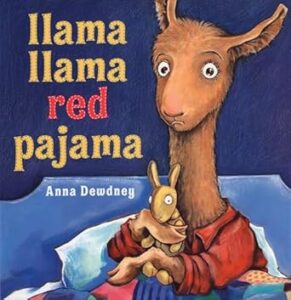
How can you step into your most unique style?
You need to create and find out where you love to play. And that’s really what it is. I’m finding that my best content comes when I’m able to play and have fun, and when you find the fun, when you are enjoying the work that you’re creating, your audience is going to enjoy consuming the work that you create, and it’s been by far the most satisfying thing. A lot of people who are watching or listening to this now might also know that I have a Pokémon YouTube channel that I started.
You get, like, what, 300 million views or something crazy like that?
We have just crossed 1.5 million subscribers. This is about four years on this channel, where, again, I’m a 40-year-old man playing with cardboard that has cartoons on it, but I’m creating stories, and they’re not even just about Pokémon. Pokémon is the medium by which I’m telling these stories, but we get comments from people who are like, “I don’t even know what this guy’s talking about, but I cannot stop watching his videos,” because we tell stories. We’re doing challenges.
We’re meeting people and finding things that are rare and hard to find, and there’s a human component to that at the root level. I’m having so much fun, and that’s a reason why. For example, a couple of weeks ago, we came out with our latest video. It already has 2 million views in two weeks.
How long does it take you to produce a video, and what’s the process of coming up, like thinking about it?
You need to create and find out where you love to play.
Yeah, so it starts with the title first. I think this is a really important strategy if you’re creating content that is long-form. Short form is different, because short form, you don’t even need to see the title, but it’s the hook in the beginning, right? I have a short-form channel that’s done really well, too, that has over a billion views on YouTube in less than a year. It’s incredible. But again, I lean learned my way into how to create shorts. In the first 30 days, I was getting zero views. Still, by continually showing up and counting uploads, not likes, that’s how you win—counting uploads, committing to the process, and making incremental improvements, as outlined in Atomic Habits. I talk about that in my book Lean Learning as well. You will eventually find your voice, you’ll find your way, you’ll find what your audience likes, and you can use data from these platforms to, again, move your way into successful stuff.
So, to go back to the long-form videos, let’s start with the title first, because if it’s a title worth clicking on, then it’s a video worth filming. If I don’t have a clickable title, then even the best video in the world won’t be effective. Nobody’s going to watch it because you have to have a title/thumbnail combo packaging around it.
How do you come up with that?
So, you have a seed idea at first. For example, on my Pokémon channel, I had an idea to teach people how to package and ship their Pokémon cards. That’s the seed idea. But if I came up with a video “How to Package and Ship Your Pokémon Cards,” not a lot of people would necessarily click on that unless they were in the process. Well, first of all, they have to have Pokémon cards to want to ship, and then they have to want to ship at that moment. And even then, it’s like, maybe people already feel like they know how to do that, like they don’t need that video. So it’s not going to be seen by a lot of people. But that’s the seed idea.
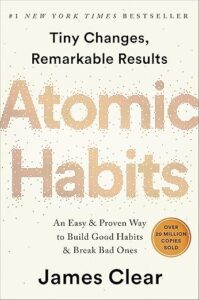
Using that seed idea to then come up with 20 to 30 different options, whether that’s on the fly. This is where I love AI. I love AI as a collaboration partner, a brainstorming partner. I can put that seed idea into ChatGPT and say, “Hey, this is my seed idea. How do I take this idea and turn it into something that’s more wide-reaching? How do I cast a wider net here, or make it more interesting to a wider audience?”
So, we came up with the idea, after looking at a whole bunch, which was “Which shipping service damages my cards the most?”
Oh, that’s great.
Now it opens up a question of whether you were into shipping or not; we want to find out. And on the thumbnail, of course, there is a box with a huge dent on it, and then the UPS logo, USPS and FedEx, and then the story.
Now, yes, I can still teach you how to properly ship your Pokémon cards. I still teach that in this video, but we also now have some other questions that people need to stick around to get the answer to, pulling inspiration from other channels amongst that in that same video, around that time, there was a person who had a viral video by sending an AirTag to North Korea so we could track what happens when it gets there. That was very interesting. So I said, “Hmm, I’m inspired by that. Can we put an AirTag in each of these packages for USPS, UPS and FedEx and just kind of track along the way?” That’ll be a good way to kind of show people or another thing that people can see, which one gets there first.
So, all in all, from the title, it turned into a completely different video that was more interesting, and that video has almost a million views. Even though it’s a utility video, it’s still entertaining in a way. Even if you don’t care about Pokémon or shipping, you still want to know the answer to that.
How do you manage all those websites, books, ideas, and companies? How do you do all that?
One thing at a time. That’s for sure. A lot of people see all these things, and they’re like, “Wow, I have to also have a book and courses and a community and YouTube channel and shorts.” No, it’s all done in sequence. My blog started in 2009, and the podcast started in 2010. It was only after I got to a point where I could understand that platform and begin to automate some of it, whether through tools or team, that I could get time back to put into something else. Because if I didn’t do that, if I just added on to it, I mean, I only have so much energy and hours during the day, but I’m able to use that energy and hours to create something, to build in a way that then I can find either support with team or tools to then now remove me from that process to move on to something else.
As a creator, the way to combat tools that are seemingly automating a lot of the creation is to tell better stories.
I do have a team on the Smart Passive Income side of things, who are amazing, taking care of the community and ensuring people get the results they want. And our results inside SPI are incredible, the best in the industry. I would fight for that. And with the Pokémon stuff, I have a producer and an editor, so they’re helping me with those components so that I can just get into the script writing and storytelling more, and I can just do more of what I want.
It was my good buddy Chris Ducker who said, “Do what you do best and delegate the rest.” And it took me a long time to learn that Orion, because when I started out, I wanted as much control over everything as possible. Because I had once given up control to my architecture firm, which then let me go. I felt betrayed, even though it wasn’t their fault; it was the economy. So I said, “If I fail, I want it to be my own fault, so I’m going to do everything,” and that was not the right way to go about it, because I did come to a point in 2012 where I was close to burning out because I was wearing all the hats.
It wasn’t until Chris Ducker, a good friend of mine, really saw where I was heading down a path that he had gone down before, that he kind of really told me the truth about what was going to happen unless I hired people and got some help along the way.
How big is your team?
On the Pat Flynn/SPI side of things, eight full-time employees have been working with them for a long time, with full benefits and everything. I’m so proud of the team we’ve built and the environment we’ve created there. And then, on the Pokémon side of things, which is a completely different team and business, there are just three of us, an additional editor, so it’s not very many at all.

Is this a physical or a virtual team?
These are all virtual teams where everybody’s working remotely.
How do you create an environment in a virtual team? You said, “I’m very proud of the environment we created.” What does that mean?
That means we give people agency to own the part of the business that they are responsible for. So rather than us going in and micromanaging, we say, “Hey, here’s what you’re responsible for, and we believe in you so much that we’re going to let you run with this and this like you’re going to own this.” And so, when we win, we’ll celebrate with you, but also, if it starts to fall short, we’ll know that it’s on you as well. That creates an environment of ownership, and it feels like people are part of the business, not just cogs in a machine that I built. That is what has led to this incredible environment that we’ve had.
Yes, we do meet in person once, sometimes twice a year, and that’s important. That’s a good recharge for us, because it’s important. However, we also have meetings, and at one point, we had too many meetings, so we’ve reduced them. Meetings can take you away from the work you’re supposed to be doing. A lot of things can be solved without a meeting, but that’s essentially how we run, and we give people that ownership and agency to do what they do best.
Wow, you are so fascinating, and there is so much to learn from you. That’s incredible.
Thank you.
“Do what you do best and delegate the rest.” – Chris Ducker
I’d like to return to the YouTube channel. If somebody wants to open a YouTube channel today, what would you advise them?
I would advise you not to do it right away, but rather get involved in a community first. That’s what I did with the Pokémon stuff. Before I said “I’m going to create a YouTube channel,” I got involved. Because when you get involved, you get invested in who it is that you’re going to be serving, which is, again, to my point, the most important thing.
For example, in the Pokémon space, I became a consumer. I became a moderator for certain channels. I got to know some of these people, and I got to talk to other people in this space to learn about them. Because I didn’t know anything about—I didn’t grow up with Pokémon, but it was something my kids got me into in 2020 during the pandemic, and then we started playing together. And then they outgrew it, and I’m still here, but I’m getting involved and getting to know the people.
In my book, Will It Fly?, I call this creating your market map. Where do these people go? So that’s the first P, the second P is the people, who are the people who have already been here, who have earned the trust, who people look up to in the space, the authorities, the influencers, if you want to call them that. Who are those people? And then the final P is product, what are the things that they’re paying for? What are the prices of those things?
When you just create a market map like that, you already start to see, just like a real map, the lay of the land, where people are and kind of what their specialties are. For example, in the Pokémon space, I learned that many creators had their own specialties. There were people like Smpratte, for example. You don’t need to know who that is, but what you need to know is he is an old school collector who has just such historical knowledge about the markets and about Pokemon cards that, like I can never compete with that—he kind of owns that.
Then, some people are into the more expensive trophy cards, which are exclusive and rare, and now worth hundreds of thousands of dollars; they specialize in that. They know about those things. They know how to acquire them. They have some of them. I can’t compete with that. There are people like PokeRev who have massive collections, huge in scale, and there would be no way I could compete with that by sharing my collection.
But what could I bring to the table? Well, nobody was telling stories or actually creating challenges within the Pokémon world, and instead, people were staying indoors, connecting with the community virtually. Everybody was filming from their own homes, or, as Smpratte says, his grandma’s “basement,” which I don’t believe is his grandma’s basement, but that’s just what he calls it.
I decided, “Okay, I’m gonna go out there into the wild and actually interact with people and capture these stories.” That’s kind of what led to a lot of the bigger videos that we’ve created today, where you see me interacting with people and doing trades and helping kids out and helping vendors and whatnot in these storylines.
So if you’re getting started, get involved first, and then when you have the itch to create, just create. Don’t worry about being perfect. And the more reps you can get, the better. Quantity is important early on, so you can learn what works and what doesn’t. A lot of people say, “Oh, quality is more important than quantity.” Don’t sacrifice value, but quantity is more important upfront. You can have a bad camera as long as you have good audio, you can have not the best video quality, and still tell a great story.
Building a community of superfans is a crucial strategy for future-proofing your brand in the AI era. Share on XAgain, story, story, stories. I think the most important thing, or at least know what you’re showing up for and what you want to try to hypothesize that you could become known for, and then just try those things. You may or may not like that, but taking action on it will help you learn whether it’s something you should persist in or pivot on. There’s a whole chapter in the book Lean Learning, “Persist or Pivot,” that gives you some frameworks about how to think about those things and how they may or may not still align after you start. So, just take action and understand that you have to be cringe before they binge, what I like to say.
I like that because it does seem like YouTube is becoming more professional, like the cinematography, the editing, everything is becoming more high-level, at least, I think so.
Yes, however, you see stories like, I don’t know if you’ve heard of Leon the Lobster. It’s a guy named Brady Brandwood who went to a grocery store with his iPhone, bought a lobster, and then raised it as a pet. That was seven years ago. That video has 23 million views, and it was filmed on his iPhone, and it was not professionally produced. But you know what? It was an intriguing story, a question that we now have to know about. And then, now there’s Leon the lobster merch. Unfortunately, Leon just recently passed away, and it was like a memorial for him.
It takes experimentation. That was not Brady’s first video. In fact, if you go to his channel and look at his history, there’s videos about all kinds of things, but once he landed on the lobster and that video took off, he continued to tell that story and share how Leon would molt and the food he was eating and how he was doing, etc. And it took him years.
I think it was MKBHD. When I interviewed him, the world’s most well-known YouTube tech reviewer, MKBHD’s Marques Brownlee, told me that his first 100 videos were for less than 100 subscribers, and now he has over 20 million subscribers.
If you go back into MrBeast’s archive, you’ll see that he has hundreds of videos that were initially random, but they were all learning experiences, and they were for no one. There were like no subscribers back then, until he found his voice and found his way. And now, of course, he’s just huge, but he kept going. That’s the other thing. He kept going with it.
Pat, how do you manage your time? How do you find time to think?
I give myself space and time to think—that’s really important. I think that literally putting those things in my calendar, such as meditation or blocks of time to decompress, often occurs during walks or when I’m working out, is when many of those good ideas emerge, and I can simply think and be. I also give myself space on a more monthly level, getting into nature, fishing, and just escaping technology. That’s become huge for me. Fishing is a great way to get out there and not look at email or think about comments or anything like that. So that’s key.
I treat time—I try to honor the time that I tell myself I’m going to do stuff. I am very, very big on discipline. When it comes to what you put in your calendar, there’s a chapter in the book about time blocking, and we have probably all heard of time blocking before, right? Like, “I’m going to put two hours of time, a block of time, in my calendar.” A literal block in Google Calendar to do this thing. That’s great, but I think of time blocking as more of a verb in the sense that it’s not a block of time; it’s about literally blocking out everything else except for this thing you’ve committed to. You’re creating a shield around these moments in the day, where nothing else can come in except for that thing you’re going to hyperfocus on or get into a flow state with. That’s how I treat time. It’s precious. And so, there are many things out there that are trying to pull us away from deep learning, deep understanding, and deep focus. We have to be careful and protect that time. Creating a barrier around it is really key.
How do you create a quantum leap? You mentioned that in your book.
So, a quantum leap, this is in the section of the book about accelerated learning. How can you quickly gain new skills? There are a number of different ways to do that. A quantum leap is almost like something that feels like a leap of faith to be able to give yourself more space and time to do something.
So the example I use in the book is my good friend Nathan Barry, who founded ConvertKit, which later became Kit. At the time he launched ConvertKit, he was also managing a book business, a design agency, and all these other things. He eventually, in order to make Kit work, had to take that leap of faith and get rid of those profitable ventures to do what he really wanted to do, which was to focus on this software. And now it’s a company that’s making like a million dollars a day, or something like that. It’s amazing because he took that quantum leap.
Now it doesn’t always have to feel like a huge escape from something. There are other ways to have big moments of surges of results, and one of those ways is what I like to call the power 10. So I used to row in college. I was on the Cal Lightweight Rowing team. And if you have ever been on one of those boats, or have ever seen them, that’s like those longer boats with like eight people on them, and the like, tiny person at the front who’s yelling commands, the way that you speed up your boat is not by just saying, “Go faster. Go. Come on, guys, faster, faster.” You create a contained moment of time to go all out for ten strokes. That’s what’s called a power 10.
Storytelling is going to be the most powerful skill that you could ever have. When you can connect on an emotional level, and when you can make that real connection, then there's no competition with AI. Share on XSo the person, the coxswain in the front of the boat, will say, “Okay, guys, we’re going to do a power 10 in three, stroke, two, stroke, one, stroke, go.” And for the next 10 strokes, you just give it everything you have. You somehow, even though you’re already going hard, you somehow muster up and find extra energy to put into it for just 10 strokes. And it’s possible, because it has an end. It’s 10 strokes. You can do 10 strokes more at full power, and you’ll see the boat fly during that time.
So finding ways to bring power tens into our own life, and it might mean if you’re a podcaster, for example, and you’ve been going weekly every week for the last year, and you’re like, “Okay, I’m going to do a power 10 for my podcast. For the week of May 7, I will release one episode per day for the entire week. I’m going to put a little bit of additional energy and surge that into my podcast just for that week,” and a week alone, it’s a contained amount of space. So you are able to do this, but it creates additional energy. It creates more momentum, literally.
A lot of times we coast through and we start to build these machines of our business and marketing, and we have automations, and that’s great. Sometimes you just need to go, “Okay, where can we insert a heightened moment?” It’s like a hackathon. Think about coders and when they do hackathons. People are coding all the time, but when you say, “Hey, we’re going to do a 24-hour hackathon where we’re going to come up with a new product in 24 hours and get no sleep.” You put in that extra energy and effort, and there’s like that time frame, a start date and end date, and so many beautiful, amazing things have come out as a result of just a contained period of heightened momentum and pressure.
And that’s just one example of how you can accelerate your learning into something. And imagine a YouTuber, like a kid who’s like, “Okay, I’m trying to learn how to play piano. And guess what? I’m gonna live stream myself playing piano for 10 hours straight tomorrow.” And that creates what I like to call a voluntary force function, which means you set this deadline that now you know people are expecting you to show up for which is like a great action step in and of itself, like putting on the calendar when something’s going to happen and then showing up with heightened stake and pressure.
But number two, it’s like you’re going to be there for 10 hours, and people are going to be watching, and if that’s your own version of a hackathon for piano. You’re just going to sit there and really do it, and then it ends, and you’ll probably be that much further ahead than if you had dedicated one hour a day for 10 days.
Not doing that too often is key, too, right? If you were rowing on a boat and you were, like, doing a power 1000, I mean, you’re gonna burn out, right? So it’s this, again, a short burst.
It makes a lot of sense. It’s really, really great, because most of the time, people try to finish projects, and they don’t even like it psychologically, just do this intense track. That’s amazing. So, thank you so much. If you want to share anything in the last sentence with the audience, please do, and where can people find you, get your book, and all that?
Thank you so much, Orion, and thank you to Stephan. I hope he gets better soon. I’m sure he will be by the time this episode goes out. So, I appreciate it. Leanlearningbook.com is where you can pre-order the book. If you’re one of the first to pre-order, there are some bonuses there as well. Deep Pocket Monster is the Pokémon channel. I know a lot of people, when I talk about that, are very curious about it. Just Pat Flynn on all social media channels as well. So again, I appreciate your time.
And a quick word for everybody out there before I leave: mistakes are important. You gotta take action and understand that we are no longer living in a world where if you fail, that means you don’t get to pass the grade. It means you just haven’t found the way yet. And there are plenty of resources out there available for you to help you find your way through anything and connect with people. And fail fast, that’s what I like to say.
Yes, thank you so much. It was a pleasure. Appreciate you.




